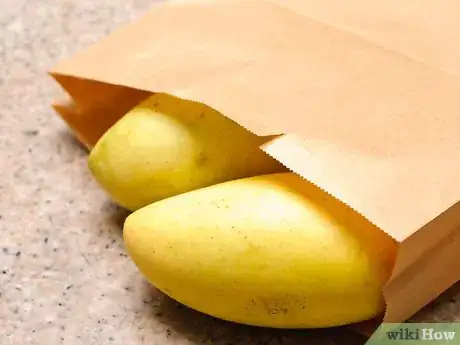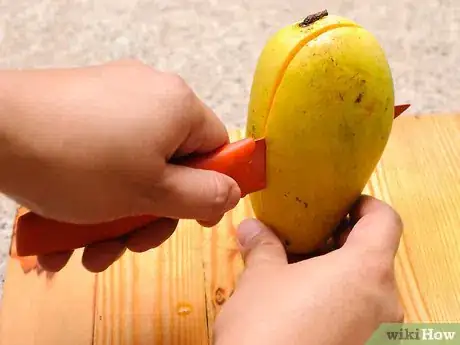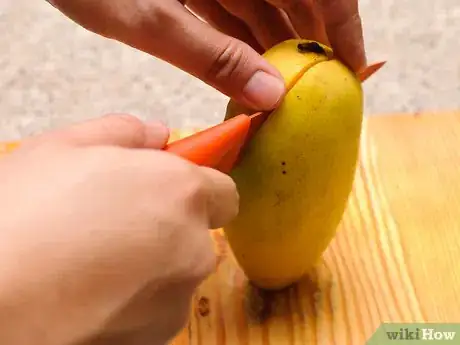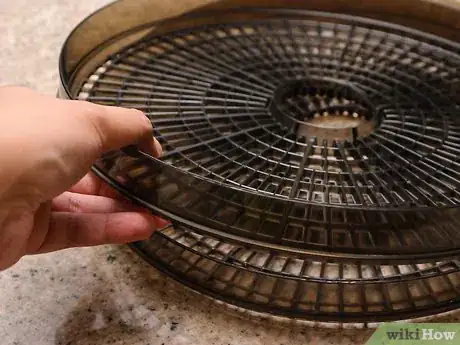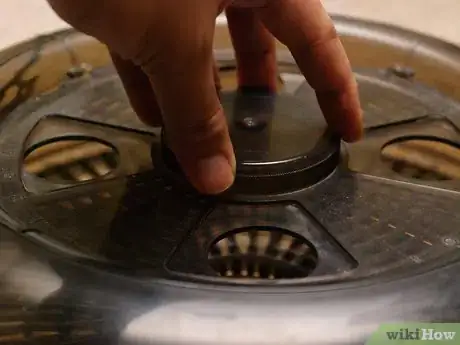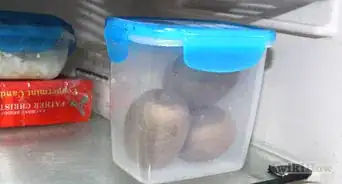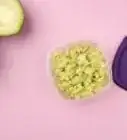X
wikiHow is a “wiki,” similar to Wikipedia, which means that many of our articles are co-written by multiple authors. To create this article, volunteer authors worked to edit and improve it over time.
There are 7 references cited in this article, which can be found at the bottom of the page.
This article has been viewed 64,660 times.
Learn more...
Mangos are a nutritious tropical fruit, known for their sweetness and starchy consistency. They contain high levels of fiber, vitamin A and natural sugars, so they make a great snack.[1] The best way to preserve ripe mangos is to dehydrate them for storage using a dehydrator or an oven.
Steps
Part 1
Part 1 of 2:
Slicing Fruit
-
1Purchase between 2 and 40 mangoes for your dehydrating procedure. The number you purchase should be commensurate with the number of dehydrator trays you have. If you plan to do it in the oven, two to three mangos will cover a baking tray.
-
2Set them on the kitchen counter to ripen if they aren’t ripe already. If you depress the skin with your thumb, a ripe mango will have some give to it.[2] An unripe mango will be very hard.Advertisement
-
3Buy a mango slicer from an online distributor or a kitchen store if you are planning on dehydrating a large number of mangos. Slicing them is a sticky process and a mango slicer will reduce your chances of cutting yourself.[3]
-
4Slice a mango by placing it on a cutting board with the end down. Slice about 1⁄4 inch (0.6 cm) from the centerline down through the mango to extract the “cheeks.” Turn a cheek so that the peel is facing down and slice parallel lines down from top to bottom.
- Be careful not to cut through the skin at the back.
- Flip the mango cheek over and peel off the skin.[4]
-
5Repeat, cutting two cheeks for each mango and setting the slices aside in a bowl.
Advertisement
Part 2
Part 2 of 2:
Dehydrating Mangos
-
1Remove your dehydrating trays from your dehydrator. Try not to take too much time between slicing and placing the dehydrating trays inside, so you can preserve the nutrients in the fresh fruit.
-
2Arrange the slices in parallel lines on your dehydrating tray. Make sure there is some space between each slice for air to move through.[5]
-
3Set your dehydrator to 130 to 135 degrees Fahrenheit (54 Celsius) for 10 to 14 hours.[6]
-
4Opt to do them in the oven by stacking them on a parchment lined baking tray and placing them on the lowest setting. Crack the door of the oven to let air flow through. Dehydrate for 10 to 14 hours.[7]
-
5Peel the dried mango off the trays. Place them in an airtight glass jar or in plastic bags. Keep them in a cool, dry and dark place to preserve freshness.
-
6Finished.
Advertisement
Community Q&A
-
QuestionDo you need a dehydrator or can you just leave them on the counter to dry out?
 Community AnswerYou can't just leave them on the counter. If you don't have a regular dehydrator you can place the peeled mangos on a cookie sheet and keep it in the oven on very low heat, about 165 degrees, at least overnight or until they are completely dried out. Check them often and turn over if needed. Store them in an airtight container or vacuum-sealed bags.
Community AnswerYou can't just leave them on the counter. If you don't have a regular dehydrator you can place the peeled mangos on a cookie sheet and keep it in the oven on very low heat, about 165 degrees, at least overnight or until they are completely dried out. Check them often and turn over if needed. Store them in an airtight container or vacuum-sealed bags. -
QuestionHow long will the mangoes last when they're prepared in this manner?
 Community AnswerLonger than fresh, but still not forever. I do recommend adding sugar before drying.
Community AnswerLonger than fresh, but still not forever. I do recommend adding sugar before drying. -
QuestionCould I freeze the dehydrated mangoes?
 Community AnswerYou could, but it would be unnecessary, as the mangoes are already preserved.
Community AnswerYou could, but it would be unnecessary, as the mangoes are already preserved.
Advertisement
Things You'll Need
- Ripe mangos
- Knife
- Mango slicer
- Cutting board
- Dehydrator
- Oven
- Baking sheet
- Parchment paper
- Timer
- Glass jars/plastic bags
References
- ↑ https://www.bbcgoodfood.com/howto/guide/health-benefits-mango
- ↑ https://www.mango.org/how-to-choose-a-mango/
- ↑ https://www.mango.org/how-to-cut-a-mango/
- ↑ https://www.youtube.com/watch?v=2BT1cd49pIw
- ↑ https://www.youtube.com/watch?v=PL_0NUrIBQI
- ↑ http://queenbeecoupons.com/dehydrate-mangoes-how-to-dehydrate-fruit/
- ↑ https://preserveandpickle.com/dehydrating-mango/#How_To_Dehydrate_in_the_Oven
About This Article
Advertisement
